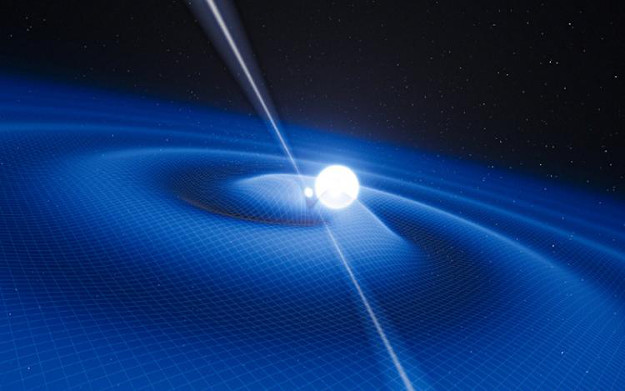Pulsar and white dwarf binary system

Date: 17 November 2015
Copyright: ESO/L. Calçada
Artist’s impression of an exotic binary system consisting of two stellar remnants, a white dwarf and a pulsar, orbiting each other.
White dwarfs are the end phase in the life of low-mass stars. Pulsars are spinning, magnetised neutrons stars – the dead remnants of massive stars.
This illustration shows the system hosting a pulsar named PSR J0348+0432, which is represented as the smaller of the two spheres, with two symmetrical jets of radio waves beaming from its poles. The white dwarf is the larger of the two spheres. (The two objects are not drawn to scale - the white dwarf is much larger than the pulsar.)
Binary systems of compact, dense objects such as white dwarfs, neutron stars and black holes are expected to be strong sources of gravitational waves.
Gravitational waves are disturbances to the structure of spacetime, produced by some accelerated massive bodies. They have not yet been directly detected, but indirect proof of their existence was found in the late 1970s.
LISA Pathfinder is paving the way for the detection of gravitational waves from space by testing the technology needed for future missions.
(Update 12 February 2016: high-frequency gravitational waves, emitted by a pair of merging black holes, were directly detected for the first time with the Advanced Laser Interferometer Gravitational-Wave Observatory.)
